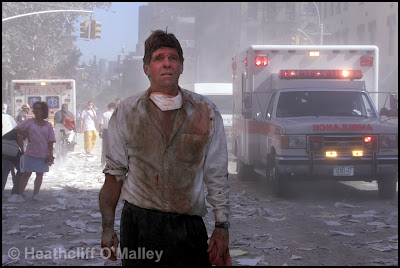Archiving Your Photo Library
Over the years I have saved my digital and analogue images to so many different types of media . First there were sleeves and zip discs for film and then CD's/DVD's and as files sizes from digital images have now increased tenfold, in recent years external Hard Drives . I've always used Lacie D2 drives, not because they are necessarily the best, but they have always worked for me, I can "daisy chain" them together with firewire cables and so far have never failed.
The thing is it came to the stage in 2010 where I had my archive spread over this whole range of media and it was taking ages to locate images for clients and any presentation I was making. I had been reading up a lot about the various types of media storage now available, and there are plenty including optical discs, Drobos and RAID systems but eventually I decided to go with a pair of larger 2TB versions of the LACIE drives I had been using over the last 5 years or so .
The reasoning behind this was that I still find large RAID systems prohibitively expensive, needing an initial minimum outlay of £1000.00 to set up whilst with smaller non RAID media I can for now, stagger my costs.
I had been following George Jardine's excellent articles in the U.S published Digital Photo Pro magazine which also raised other issues I had with my archive including how I named my files .
Over a month or so I transferred the last decade of images shot since I moved to digital in 1999 during the Kosovan war over to a 2 TerraByte drive and then went about the arduous process of renaming all the folders into reverse date format, sometimes followed by the job name if needed. Therefore the portrait shoot of Tory Peer Nigel Lawson I made last month changed from my old date format of "27/1/11 Lawson" to "20110127 Lawson" which then sorts all of my folders into chronological order on the drive index.
Once that process was completed I then duplicated the photo library onto another identical drive, re-boxed it and stored it safely, hopefully never to be touched until my everyday working drive fails. Labelling my everyday drives underneath with masking tape makes identifying a particular archive a breeze.
My current archiving workflow is of course not fool proof and although I managed to squeeze an entire decade onto 2TB's, now that I consistently shoot RAW and use Canon cameras with a far higher resolution than my original Canon/Kodak DCS 2MP cameras, a years worth of images is taking up that same 2TB of space !
This system, although taking up a lot of storage space is however enabling me now to locate images with ease and has the added bonus of giving me the opportunity to look at, reassess and enjoy images I haven't seen in years.....
The thing is it came to the stage in 2010 where I had my archive spread over this whole range of media and it was taking ages to locate images for clients and any presentation I was making. I had been reading up a lot about the various types of media storage now available, and there are plenty including optical discs, Drobos and RAID systems but eventually I decided to go with a pair of larger 2TB versions of the LACIE drives I had been using over the last 5 years or so .
The reasoning behind this was that I still find large RAID systems prohibitively expensive, needing an initial minimum outlay of £1000.00 to set up whilst with smaller non RAID media I can for now, stagger my costs.
I had been following George Jardine's excellent articles in the U.S published Digital Photo Pro magazine which also raised other issues I had with my archive including how I named my files .
Over a month or so I transferred the last decade of images shot since I moved to digital in 1999 during the Kosovan war over to a 2 TerraByte drive and then went about the arduous process of renaming all the folders into reverse date format, sometimes followed by the job name if needed. Therefore the portrait shoot of Tory Peer Nigel Lawson I made last month changed from my old date format of "27/1/11 Lawson" to "20110127 Lawson" which then sorts all of my folders into chronological order on the drive index.
Once that process was completed I then duplicated the photo library onto another identical drive, re-boxed it and stored it safely, hopefully never to be touched until my everyday working drive fails. Labelling my everyday drives underneath with masking tape makes identifying a particular archive a breeze.
My current archiving workflow is of course not fool proof and although I managed to squeeze an entire decade onto 2TB's, now that I consistently shoot RAW and use Canon cameras with a far higher resolution than my original Canon/Kodak DCS 2MP cameras, a years worth of images is taking up that same 2TB of space !
This system, although taking up a lot of storage space is however enabling me now to locate images with ease and has the added bonus of giving me the opportunity to look at, reassess and enjoy images I haven't seen in years.....




Comments